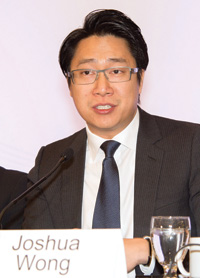Speaking at the APPrO 2018 conference on November 13, Joshua Wong of Opus One Solutions outlined some new and challenging concepts for grid management. Distribution-connected resources, already growing in a number of jurisdictions, can do more than simply respond to wholesale prices. While primarily offering services at the local or micro-local level, DERs may also influence wholesale prices at certain times and places. Mr. Wong explains that, as the potential for impacting wholesale prices grows larger, so does the need to look at grid management differently.
 To recognize these changes, operators of distribution systems will likely have more factors to optimize in real time. Mr. Wong noted that these additional factors may include local grid capacity, hosting capacity, power quality and resiliency, to say nothing of making choices differently when it comes to longer term planning time frames. Although many utilities are prepared to take on this wider set of responsibilities, protocols and procedures remain to be standardized for how grid management information will be exchanged between the wholesale and distribution levels. Many market participants believe this is precisely where collaborative efforts to reform regulatory models will need to be focused in 2019.
To recognize these changes, operators of distribution systems will likely have more factors to optimize in real time. Mr. Wong noted that these additional factors may include local grid capacity, hosting capacity, power quality and resiliency, to say nothing of making choices differently when it comes to longer term planning time frames. Although many utilities are prepared to take on this wider set of responsibilities, protocols and procedures remain to be standardized for how grid management information will be exchanged between the wholesale and distribution levels. Many market participants believe this is precisely where collaborative efforts to reform regulatory models will need to be focused in 2019.
From the panel, Mr. Wong suggested that one of the important concepts grid operators are likely to develop further is “optionality” in terms of deriving value. Distribution utility operators are facing increasingly complex power flows, with levels of unpredictability that lead to overall inefficiencies and increasing system costs. While investment will be required to connect any new DER resources, the diversity of services available from distribution connected resources can provide utility operators with options to better manage the distribution grid, while lowering total overall system costs. For many such operators, the locus of attention is shifting from the bulk system to the local level, driven by consumer needs and demands.
Responding to a question from the moderator, Mr. Wong explained, “The edge is becoming more and more empowered. There is demand flexibility, storage, electric vehicles, solar, and behavioural changes … There is value in optionality.” Such optionality between traditional infrastructure investments and edge-based DERs can lead to a lower cost, higher reliability, and more customer engagement in the electric system.
Discussion among the panel members, and with conference participants, revolved around the need for a more effective marketplace to allow all resources to transact within, between and among the distribution grids. Many expect that grid edge resources (DERs) will continue to grow in popularity as technology costs decrease and as consumers continue to take on a more active role within the broader electricity ecosystem.
The challenge that utilities and the IESO will face in the years ahead, Mr. Wong suggested, will be to derive full value from these DERs. This will include sending the most appropriate price signal for these resources to be dispatched and transacted, at “the right location, right time, and providing the right services,” he said. At the same time, enabling accurate market signals and distribution grid visibility should drive siting decisions, to ensure that DER resources are designed and located to serve the grid in the most effective and efficient ways. Cost savings and customer empowerment are important drivers, Mr. Wong said, factors that are leading efforts to drive more sophisticated integration and operation of DERs – and opening up the marketplace to derive greater value from these resources.
On November 22, the Ontario Energy Board’s Chair’s Advisory Committee on Innovation released a set of recommendations echoing many of the same concepts. It alluded to a suite of non-wires alternative technologies that can better serve grid reliability, resiliency and infrastructure needs, as compared to traditional infrastructure. Specifically, the ACI recommended the OEB take steps to remove disincentives and barriers to utility business models and approaches that tend to lock out DER’s from contention. Given that distribution connected resources, if properly sited and operated, can provide stacked benefits and provide multiple services – the Committee was keen to both reduce overall system costs, as well as reducing regulatory burden on both LDC’s and smart grid service providers.
The tabling of this report comes at an important time in the OEB’s mandate review process, which creates the platform for regulatory system adjustments to recognize the evolution (some would say “revolution”) that is occurring within the distribution sector. See also “OEB report proposes pathways to embrace innovation,” page 13.
As the conference discussion moved on it became apparent Mr. Wong had articulated concerns held by many delegates, although significant uncertainty remains about how to move forward with changes to enable evolution towards a more transactive grid. Concluded Wong: “I think the only solution is to open up the [distribution grid] and really properly facilitate access and value-based transactions.”
With innovation moving quickly and regulatory reform on the horizon in Ontario, it is possible that 2019 will represent an important pivot in how resources transact at the distribution level.
